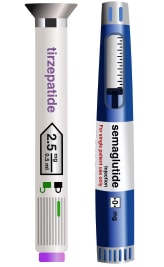Breast cancer is the most common type of cancer affecting women in the United States. The American Cancer Society estimates that one in nine women will experience breast cancer in their lifetime. Once an abnormality is discovered, a referral to a surgeon is typically undertaken. When it comes to breast cancer removal surgery, we feel that it is of the utmost importance that all of your questions and concerns are answered. There are usually several treatment options in each case that we will discuss with you.
We are experienced in the most advanced, minimally invasive diagnostic and therapeutic approaches. With these cutting-edge procedures, we can treat breast cancer and maintain an excellent cosmetic result.
- Breast Cancer Causes
- Breast Cancer Signs
- Breast Cancer Detection
- Breast Cancer Treatment
- Breast Reconstruction
What Causes Breast Cancer?
Medical professionals have yet to determine a concrete cause of breast cancer; however, a number of factors have been linked to the development of cancerous cells. For example, breast cancer is much more common in females than in males. Additionally, genetics have been shown to play a role, as women with a family history of breast or ovarian cancer are more likely to be diagnosed with breast cancer in their lifetime. Patients who are over 50, overweight, live sedentary lifestyles, and/or drink excessive amounts of alcohol are also at a higher risk of a cancer diagnosis.
Furthermore, there have been studies suggesting a correlation between breast cancer and various phenomena, including dense breasts, early exposure to radiation, and high levels of estrogen and progesterone.
What Are Common Signs of Breast Cancer?
Breast cancer is notoriously difficult to diagnose based on individual symptoms (i.e. lumps). This is because indications can be confused with other conditions, such as skin diseases, cysts, or a common affliction called “fibrocystic breast condition,” which is characterized by non-cancerous lumps and soreness. In fact, the majority of lumps that appear on the breasts are often benign. That said, all lumps, regardless of appearance or size, should still be evaluated to rule out the possibility of cancer.
Moreover, the following symptoms may be associated with breast cancer:
- Lumps on the breast or the armpit
- Abnormally thick or dimpled breast skin
- Significant swelling
- Red or flaky skin on the breast
- Nipple discharge or retraction
- Soreness or tenderness
How Is Breast Cancer Detected?
There are a few methods for detecting breast cancer. The diagnostic process usually begins with an exam, during which the provider thoroughly inspects lumps for potentially malignant signs. Depending on the results, this physical exam may be followed by a mammogram, which is an advanced breast x-ray; an ultrasound, which uses sound waves to produce detailed images of the body; an MRI, in which powerful magnets and radio waves are applied to detect visual signs of cancer or other abnormalities; or a biopsy, in which a small amount of tissue is removed from the breast and tested. The mammotome, which has been featured on several television talk shows, is used frequently for diagnostic biopsies and utilizes a three-millimeter incision and local anesthesia.
For patients who have been newly diagnosed with breast cancer, our surgeons can employ a minimally invasive technique called the sentinel lymph node biopsy. This procedure can be used to discern whether or not the cancer has migrated away from the breasts and spread into surrounding tissue. It was developed to track the movement of cancer cells to surrounding lymph nodes. If the sentinel lymph node under the armpit is shown to be affected, it is likely the cancer has begun to metastasize. Our surgeons have found this test extremely useful in determining both the severity of breast cancer and plans for further treatment.
How Is Breast Cancer Treated?
Especially when diagnosed in its early stages and addressed before cancerous cells spread, breast cancer can be treatable. Depending on the stage of cancer and symptoms present, we may recommend one of the following surgeries:
Lumpectomy
As the name suggests, a lumpectomy is performed to remove the affected portion of the breast, such as a malignant lump or tumor. It can be utilized to treat cancer or benign breast lumps. This surgery is sometimes referred to as a “partial mastectomy,” though it should be noted that a full-fledged mastectomy involves the removal of more breast tissue.
Mastectomy
Whereas the goal of a lumpectomy is to remove the affected part of the breast (and sometimes nearby tissue), a mastectomy aims to remove all, or most of, the breast. It may or may not include the removal of nearby lymph nodes (such as the sentinel lymph nodes); the nipple-areola complex; or skin. In some cases, elements of the breasts can be preserved to be used in breast reconstruction surgery. Our surgeons always strive to keep the possibility of breast reconstruction open for patients who are interested.
Lymph Nodes Dissection
Both lumpectomy and mastectomy typically warrant the dissection of lymph nodes, particularly in more severe stages of breast cancer. Because this cancer, as well as other types of cancer, often spread to surrounding lymph nodes, the surgical removal of nearby lymph nodes can prevent metastasis or detect whether it has already begun. Many breast cancer removal surgeries involve the removal of the axillary lymph nodes, or the lymph nodes in the armpit, which are in close proximity to the breasts.
Should I Get Breast Reconstruction?
If you have just had breast cancer removal surgery, the decision to undergo breast reconstruction may seem daunting. Rest assured, however, that our team regularly works with board-certified plastic surgeons to help patients understand their candidacy and options for breast reconstruction surgery. If you are eligible and interested in reconstructing the appearance of your breasts after cancer removal surgery, we can help coordinate your treatment with a skilled plastic surgeon to help you safely achieve your goals.

